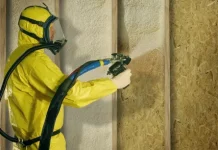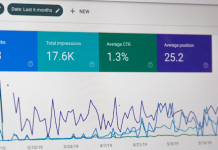With so many advancements in technology, 3D printing has been a tremendous demand in the manufacturing industry. From architects to jewelers, from aerospace to medical field and from hobbyists to engineers, everyone is eager to get involved in 3D printing because of the manufacturing advantage it offers.
Like so many models with varying specifications available in the market, it can be a difficult proposition for newcomers to decide which 3D printer is right for them. To help you out, we have compiled a list of major factors to consider when buying a 3D printer.
Important Things to Consider When Buying a 3D Printer
- Types of 3D Printers
Different 3D printers utilize different printing technology to create various physical objects but most of the commercially available printers use one of the six mentioned methods here:
FDM – Fused Deposition Modeling (FDM) is the most common type of 3D printing methods used by desktop 3D printers. In this method heating and extruding thermoplastic filaments are used to print objects. This environment-friendly method is widely used in the medical, food and automotive industry.
SLA – Stereolithography (SLA) is one of the oldest and most reliable 3D printing methods that provide the best print quality and is used by mechanical engineers to create a prototype. In this method, a layer of photosensitive plastic is exposed to a UV laser beam to harden a model and then the model is rinsed with a solvent.
SLS – Selective Laser Sintering is different from SLA that utilize powder material instead of UV and liquid resins. This method uses an expensive high-powered laser to print objects. The 3D printing material can range from glass, steel, silver or nylon.
SLM – Selective Laser Melting (SLM) is also considered as a subcategory of SLS technology. This process uses a high-powered laser beam to fully melt a surface of metallic powder. The metals used are aluminum, silver, titanium, and steel to create parts with complex structures for the aerospace and implant industry.
EBM – Electronic Beam Melting (EBM) process uses an electronic beam under a high vacuum to melt powdered material at a very high temperature.
LOM – Laminated Object Manufacturing (LOM) is one of the most affordable and fastest 3D printing methods that use layers of plastic or adhesive-coated paper. They fused under heat and then shaped by cutting with a computer-controlled laser or knife.
- Types of Materials
There are a variety of materials used in 3D printing. Manufacturing companies are developing new types of materials regularly that are widely used in different industrial requirements. Some of the popular 3D printing materials are:
Plastic – It’s also known as Polylactic acid (PLA) and Acrylonitrile Butadiene Styrene (ABS) is the most widely used plastic material, especially for entry-level 3D printers of FDM technology. Both of them are available in a wide range of colors and can be used in FDM, DLP, and SL printers.
Composites – These are the metal or wood composites that are mixed with the polymer and the material comes in a filament form. For metal, stainless steel and aluminum are the two strongest possible metal materials used in the aerospace and manufacturing industry.
Ceramic – This is relatively new in the 3D printing material list and needs to be fired after printing in order to retain its shape permanently.
Paper – It’s a very affordable printing material in which a standard A4 copier paper is used by the proprietary SDL process.
Food – The food substances are used in 3D printing for chocolate, pasta, meat, and sugar. However, the materials are still in their developing stage for 3D printing.
- STL Files
Standard Tessellation Language (STL) is a standard file format on which most 3D printers rely. These files form the bridge between CAD designs and 3D printer hardware by using a mesh of triangles to model three-dimensional objects. There are more than 30 online STL communities from where STL files can be purchased or downloaded for free. Some of the popular and comprehensive sites are Thingiverse, Autodesk, and Instructable, etc. You can use these resources to create your own desired 3D model.
- Quality
3D print quality is an important factor for concern when buying a 3D printer. The print quality depends on two things – print resolution (the smaller, the better) and print speed (the faster, the better). The print resolution has a direct impact on the printing of tiny features and the finishing of the printed objects. Smaller the value of resolution, the higher the level of details can be produced. The print resolution is measured in microns.
The print speed measures how fast a printer can move the extruder. The faster the extruder speed, the higher the speed of printing. The factors like acceleration and deceleration can affect the speed of the printer but they also help prevent the printer from shaking.
- Price
Last but not least, price is a major factor to consider when making a purchase. If you’re new in 3D printing, you can start with a cheap 3D printer even less than $500. The price of a 3D printer is determined by several factors like print quality, resolution and size of the print object. Today, due to heavy competition in the 3D printing industry, the price is getting lower with improved quality. Based on your needs, you can buy the best 3D printer at different prices ranges from $500 to $3000 with great printing capabilities and features.
Final Words
Choosing a 3D printer is a difficult task especially if you’re new in 3D printing and many times people end up choosing the wrong machine for their needs. The above-mentioned buying guide will help you choose the right 3D printer that worth your hard-earned money. If you have any suggestions or queries about this article, let us know in the comment section below








